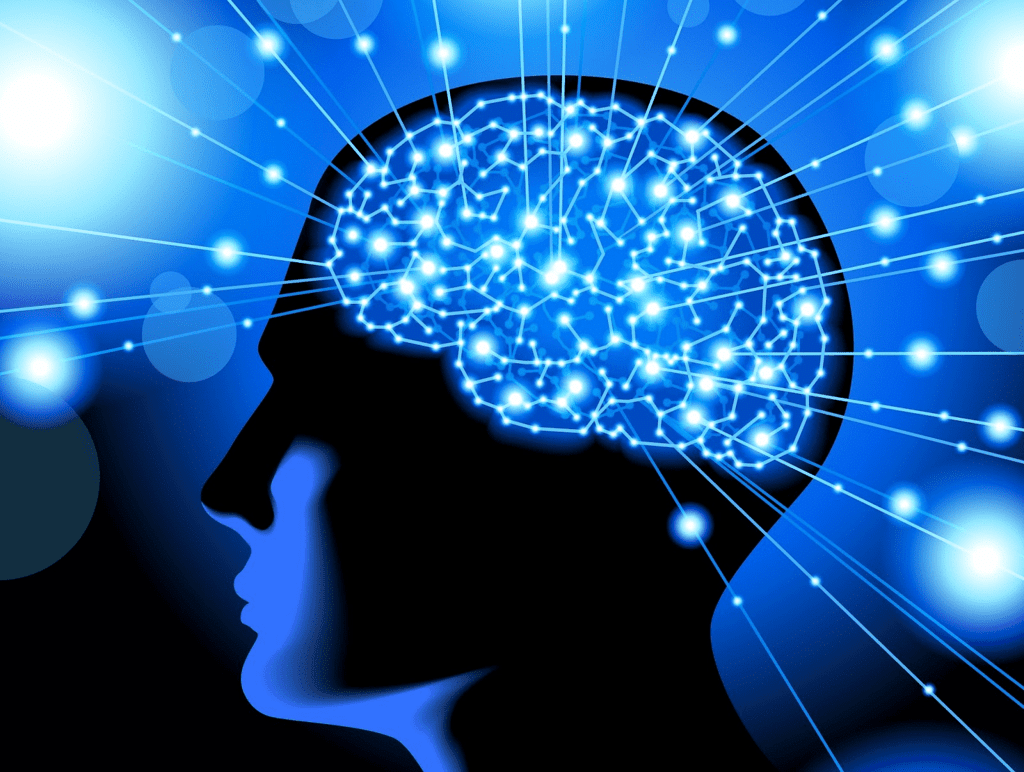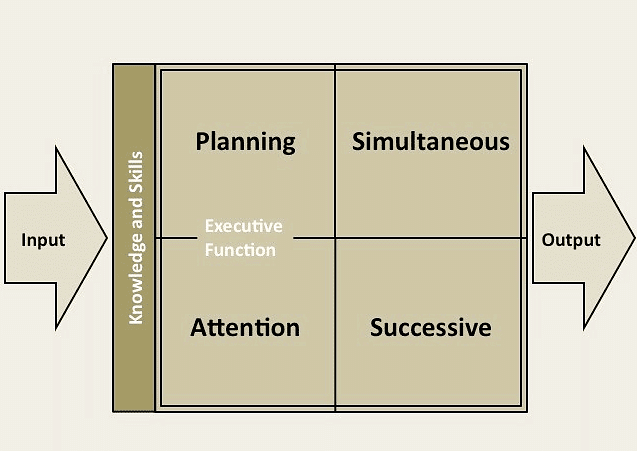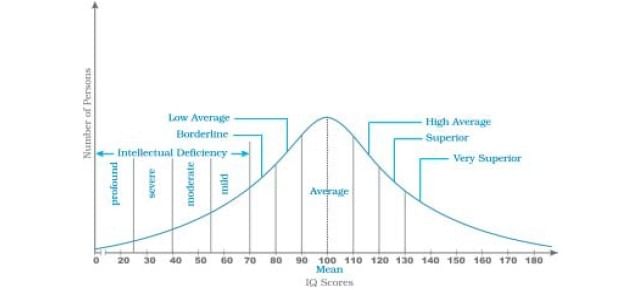(Part - 1) - Variations in Psychological Attributes Class 12 Psychology
Introduction
Intelligence is a key psychological attribute that interests psychologists, as people vary in their abilities to comprehend complex concepts, adapt to their surroundings, learn from experiences, engage in reasoning, and overcome challenges.
 Human Intelligence
Human Intelligence
Individual Differences in Human Functioning
- Every person is unique, as they possess a specific blend of various traits that exist within them in varying degrees or intensities.
- Individual differences refer to the uniqueness and variations in people's behavior patterns and characteristics.
- Situationism proposes that the behavior of an individual is influenced by the circumstances and situations they are placed in.
- At times, situational factors are dominant to the extent that people with different personality traits exhibit similar responses.
- The situationist perspective places more emphasis on the influence of external factors on human behavior rather than individual differences in traits and personality.
Assessment of Psychological Attributes
To comprehend the characteristics of an individual, the initial stage is to conduct an assessment. This involves measuring and evaluating the psychological attributes of a person using multiple methods as standards of comparison.
The assessment process can be categorized as either Formal or Informal:
- An informal assessment, such as when we say "Ritesh is dominant", is based on our perception and evaluation of dominance without using any defined technique to measure it. As a result, this type of assessment can vary significantly between assessors due to subjective interpretation.
- In contrast, a formal assessment involves using a specific technique or measuring standards to evaluate an attribute. It is objective, standardized, and organized. Formal assessment also involves measuring an attribute in relation to its practical application in a given situation. For example, if Ritesh is formally assessed as dominant, interventions may be necessary to modify his behavior when working with his team at work, and so on.Question for Revision Notes (Part - 1) - Variations in Psychological AttributesTry yourself:Which of the following best describes the purpose of psychological assessment?View Solution
Some of the domains of these attributes
Psychological attributes are multi-dimensional, requiring assessment in cognitive, emotional, and social domains for a comprehensive understanding.
1. Intelligence
- It refers to a person's overall capacity to comprehend, reason logically, and effectively utilize available resources when facing a challenge or situation.
- It indicates a person's general cognitive ability and competence.
2. Aptitude
- It refers to an individual's inherent potential to acquire skills.
- Aptitude assessment helps predict a person's ability to perform in a specific role if provided with the appropriate environment and training.
- For instance, training a person with good language aptitude could lead to them becoming an accomplished writer.
3. Interest
- It is an individual's preference or inclination towards engaging in a particular activity.
- Assessing a person's interests can aid in determining which occupation or activity would make them feel comfortable and satisfied.
4. Personality
- It refers to a person's relatively consistent and enduring traits that set them apart from others.
- A personality test can provide insight into how an individual is likely to behave in the future, such as whether they are dominant, submissive, moody, withdrawn, or emotional.
5. Values
- They are an individual's lasting beliefs about an ideal mode of behavior.
- It includes a set of standard rules and guidelines that a person adheres to when living their life.
- Understanding a person's values can help determine the kind of decisions they are likely to make in specific situations, such as those involving politics, religion, social issues, or economics.
[Intext Question]
Assessment Methods
Several methods are used for psychological assessment:
1. Psychological Test
- It is an objective and standardized method of measuring an individual's psychological attributes, such as mental capacity, behavior, and aptitude, among others.
- These tests are used in various fields, such as clinical diagnosis, guidance, personnel selection, placement, and training.
2. Interview
- It is a one-on-one conversation in which a counselor or interviewer seeks information from the client.
- This method is often used by door-to-door salesmen to survey individuals about a product, journalists interviewing important political figures, or employers assessing potential employees.
3. Case Study
- It involves conducting a detailed examination of an individual's psychological attributes by collecting information through interviews, observation, and questionnaires.
- This method is used to assess various attributes and draw learnings. For instance, studying an eminent leader's case study to learn about their personality, aptitude, and values.
4. Observation
- It involves employing a systematic and objective procedure to record behavioral phenomena occurring naturally in real-time.
- Observation methods are useful in studying real events and situations. However, their interpretation can be subjective and controlled by the observer to some extent.
- For example, studying the mother-child relationship by objectively observing them for a specific duration.
5. Self-report
- It is a method in which an individual provides factual information about themselves or their opinions, beliefs, and attitudes.
Intelligence
- Intelligence is a crucial attribute used to distinguish individuals from each other. However, the psychological definition of intelligence differs greatly from its common definition.
- The common definition of intelligence includes qualities such as mental alertness, quickness to learn and understand relationships, and having a sharp wit.
- On the other hand, the Oxford definition characterizes intelligence as the ability to perceive, learn, understand and acquire knowledge.
Theories of Intelligence
Psychologists have suggested various intelligence theories, which can be categorized as psychometric/structural or information-processing approaches.
The Psychometric or Structural approach
It views intelligence as a collection of abilities and measures an individual's performance through a single cognitive ability index.1. Uni or One Factor Theory
- By Alfred Binet
- Intelligence comprises a single set of abilities that are applicable to any problem an individual may face in their environment.
2. Two Factor Theory
- By Charles Spearman
- Proposes that intelligence consists of a general factor (g-factor) comprising mental operations that are fundamental and universal to all performances, and specific factors (s-factors) consisting of domain-specific abilities that enable individuals to excel in their respective fields such as singing, dancing, or cooking.
3. The Theory of Primary Mental Abilities
- Developed by Louis Thurstone
- Proposes that intelligence comprises seven independent primary abilities, which are:
(a) Verbal Comprehension: The ability to understand the meaning of words, concepts, and ideas.
(b) Numerical Abilities: The skill to perform numerical and computational tasks with speed and accuracy.
(c) Spacial Relations: The ability to visualize patterns and forms.
(d) Perceptual Speed: The speed of perceiving details.
(e) Word Fluency: The ability to use words fluently and flexibly.
(f) Memory: The ability to recall information accurately.
(g) Inductive Reasoning: The skill to derive general rules from presented facts.
4. The Hierarchical Model of Intelligence
- Proposed by Arthur Jensen
- Operates at two levels:
Level I: Associative learning, where the output is similar to the input, such as rote learning and memory.
Level II: Cognitive competence, which involves higher-order skills that transform the input to produce an effective output.
5. The Structure of Intellect model
- By J.P. Guilford
- Classifies intellectual traits into three dimensions:
i. Operations: what the respondent does, including cognition, memory recording, memory retention, divergent production, convergent production, and evaluation.
ii. Contents: the nature of materials or information on which intellectual operations are performed, including visual, auditory, symbolic (letters and numbers), semantic (words), and behavioral (information about people's behavior, attitudes, needs).
iii. Products: the form in which information is processed by the respondent, classified into units, classes, relations, systems, transformations, and implications.
The Information-Processing Approach
It involves studying the cognitive functions that underlie intelligent behavior, with a focus on how intelligent individuals reason and solve problems. It seeks to describe the processes involved in such activities.
1. Theory of Multiple Intelligence
Howard Gardner proposed that intelligence is not a singular entity, but rather, that distinct types of intelligences exist. These intelligences are independent of one another, but may work together at times to find solutions to problems. To help remember these types of intelligences, Gardner developed the acronym MISLLB.
Through his studies of exceptionally talented individuals, Gardner identified eight types of intelligences:

- People with Linguistic intelligence (word smart, articulate, poets, writers) excel in the production and use of language skills.
- Logical-Mathematical intelligence (scientific thinking, problem solving) is characterized by the ability to think logically, critically, abstractly, and solve mathematical problems using symbols. Examples include Nobel Prize-winning scientists and mathematicians.
- Spatial intelligence (visual images, patterns) involves forming, using, and transforming mental images. Examples of those with spatial intelligence include pilots, sailors, sculptors, painters, architects, interior decorators, and surgeons.
- Musical intelligence (sensitivity to rhythm, sound patterns) allows individuals to produce, create, and manipulate music patterns.
- Bodily-Kinaesthetic intelligence (using the body flexibly and creatively) is seen in athletes, dancers, sportsmen, gymnasts, and surgeons, among others.
- Interpersonal intelligence (an ability to understand to subtle aspects of others’ behaviours) : This is the ability to understand the motives, feelings and behaviours of other people so as to bond into a comfortable relationship with others.
- Intrapersonal (an ability to understand of one’s own feelings, motives, and desires): This refers to the knowledge of one’s internal strengths and limitations and using that knowledge to effectively relate to others.
- Naturalist intelligence (sensitivity towards the natural world) involves an awareness of one's relationship with the natural world, including the beauty of flora, fauna, and ecology. Examples include hunters, farmers, tourists, botanists, environmentalists, and animal activists.
2. Triarchic Theory of Intelligence
Robert Sternberg (1985) proposed that intelligence is the ability to adapt, shape, and select the environment to achieve personal goals as well as those of society and culture.
He classified intelligence into three basic types:

- Componential Intelligence: Analyzing information to solve problems. These individuals think analytically and critically. Componential intelligence has three components, each serving a different function:
Knowledge acquisition: Learning, encoding, combining, and comparing information (Find stage).
Metacomponents: Controlling, evaluating, monitoring, and planning (Cognitive processing-analyze and solve stage).
Performance components: Taking action and actually executing the planned task (Operational skill-transfer stage). - Experiential Intelligence: Using past experiences creatively to solve new problems. These individuals make new discoveries and inventions. They have the ability to filter crucial information for a given situation.
- Contextual Intelligence: This intelligence involves the ability to deal with environmental demands and adjust to the situation. Street smarts and business sense are some of the manifestations of this intelligence. Those who possess this intelligence can adapt to the environment or modify it according to their needs, and are hence more successful.
3. PASS Model of Intelligence: (Planning, Attention Arousal and Simultaneous- Successive model)
Given By J.P. Das, Jack Naglieri, Kirby. According to this model, intellectual activity involves the interdependent functioning of three neurological systems, called the functional units of brain. These units are responsible for the following:
These units are responsible for the following:
- Arousal and Attention: Arousal plays a role in attention by helping individuals focus on stimuli. However, too much or too little arousal can interfere with attention. For example, when a teacher informs you about an upcoming test, this stimulates you to pay attention to the relevant chapters, and arousal helps you focus on reading, learning, and revising.
- Simultaneous and Successive Processing: Simultaneous processing allows individuals to perceive relationships between different concepts and integrate them into meaningful patterns, such as understanding relationships among abstract figures or solving jigsaw puzzles. On the other hand, successive processing occurs when individuals remember things sequentially, such as learning digits and alphabets.
- Planning: Planning is an essential component of intelligence. After information is attended to and processed, planning is activated to think of possible courses of action to reach the goal and evaluate their effectiveness. Additionally, this aspect of intelligence helps review gaps in the plan and develop alternative plans if necessary.
Individual Differences in Intelligence
The study of identical or fraternal twins, siblings raised together or apart in different environments helps us understand that intelligence is influenced by two factors:
- Nature - Heredity, genes
- Nurture - Environment, nutrition
Intelligence: Interplay of Nature and Nurture
Research findings show that the correlation of intelligence in different samples is as follows:
- Identical twins raised together show a correlation of almost 0.9
- Identical twins separated in childhood show a correlation of 0.72
- Fraternal twins raised together show a correlation of 0.6
- Siblings raised together show a correlation of 0.5
- Siblings raised apart show a correlation of about 0.25
- Moreover, studies reveal that adopted children tend to display intelligence more similar to their biological parents than their adoptive ones. However, as they grow older, their intelligence moves closer to that of their adoptive parents.
Hence, psychologists generally agree that intelligence is a result of the complex interaction between heredity (nature) and environment (nurture).
Assessment of Intelligence
- In 1905, Alfred Binet and Theodore Simon made the first successful attempt to measure intelligence.
- Mental Age (MA) is a measure of intellectual development relative to people of the same age, while Chronological Age (CA) is the biological age from birth.
- If a person's MA is higher than their CA, they are considered bright and more intelligent.
- If their MA equals their CA, they are considered to have average intelligence.
- If their MA is lower than their CA, according to Binet and Simon, the person is called "retarded".
- In 1912, William Stern, a German psychologist, introduced the Intelligence Quotient (IQ), which is calculated as the person's Mental Age divided by their Chronological Age and multiplied by 100. The multiplier of 100 is used to avoid decimal values.
- An IQ score of 100 is obtained when the MA equals the CA.
- If the IQ is higher than 100, the child's mental age is considered to be higher by that number of points compared to their chronological age.
- If the IQ is lower than 100, the child is considered to have a low IQ.
 IQ scores tends to approximate a bellshaped curve, called the normal curve.
IQ scores tends to approximate a bellshaped curve, called the normal curve.
Variations of Intelligence
1. Intellectual Deficiency
The definition of intellectual disability is having significantly below average intellectual functioning along with deficits in adaptive behavior, which is evident during the developmental period.
This definition covers three main features:
- Below average intellectual functioning, resulting in slower comprehension compared to peers of the same age.
- Difficulties with adaptability and effectively coping with the environment, which may hinder the ability to hold a job or manage a family independently.
- Manifestation during the developmental period.
The severity of intellectual disability varies based on the level of IQ deficiency:
Mild: IQ 55-70
Moderate: IQ 35-55
Severe: IQ 20-35
Profound: IQ < 20
Individuals with mild to moderate intellectual disability can often benefit from special education and training, whereas those with severe to profound intellectual disability may require more long-term support and assistance throughout their lives.
2. Intellectual Giftedness
Exceptional performance resulting from exceptional potential with an IQ score of more than 130 can be identified through the concepts of talent and giftedness. While these terms are often used interchangeably, they have distinct meanings. Giftedness refers to exceptional overall ability and superior performance in diverse areas, while talent pertains to exceptional ability in a particular domain such as social, spiritual or aesthetic. Highly talented individuals are sometimes called prodigies. Talent is a combination of high ability, high creativity, and high commitment.
Important characteristics of gifted children:
- Advanced logical thinking, questioning and problem solving.
- High speed in processing information.
- Superior generalization and discrimination ability
- Advance original and creative thinking
- High level intrinsic motivation, self esteem.
- Independent and non-conformist thinking
- Preference for solitary academic activities.
Type of Intelligence Tests
1. Individual or Group tests

2. Verbal, Non-verbal or performance tests
- Intelligence tests can be entirely verbal, entirely written, entirely performance-based, or a combination of all three.
- Verbal tests require test-takers to provide verbal responses, either orally or in written form. These tests can only be administered to people who are literate.
- Non-verbal tests use pictures or illustrations, where subjects examine an incomplete pattern and choose figures to complete the pattern. These tests can be administered to individuals of any culture group or literacy level. One example of a non-verbal test is Raven's Progressive Matrices (RPM).
- Performance tests require test-takers to manipulate objects and other materials to perform a task, and written language is not necessary. Therefore, these tests can be administered to individuals with low literacy and of any culture. An example of a performance test is Koh's Block Design, which contains wooden blocks.
3. Culture-Fair or Culture-Biased Tests
- Culture-fair or culturally appropriate tests are designed to avoid discrimination against individuals from different cultures. These tests evaluate experiences that are common across all cultures or do not require the use of language. Non-verbal and performance tests are helpful in reducing the cultural bias that is often present in verbal tests.
- In contrast, culture-biased tests are intended for a particular population and produce results that are biased towards a specific group, culture, or population due to cultural factors.
4. Intelligence Testing in India
- If a child performs poorly on an intelligence test, it could result in feelings of shame, which can have a negative impact on their performance and self-esteem.
- Moreover, the test results could lead to discriminatory treatment by parents, teachers, and other members of society. Intelligence tests do not measure creative abilities or practical intelligence, and they may not be strongly associated with success in life.
- Additionally, administering a test that favors high or middle-class populations could underestimate the intelligence quotient of children from disadvantaged backgrounds.
Difficult Words
- Comprehend: Understand or grasp the meaning of.
- Adapt: Adjust or modify in response to changes.
- Reasoning: The process of thinking logically.
- Overcome: Successfully deal with or overcome challenges.
- Functioning: The operation or activity of something.
- Situationism: The perspective that behavior is influenced by circumstances and situations.
- Trait: A distinguishing quality or characteristic.
- Assessment: The process of evaluating or measuring psychological attributes.
- Cognitive: Related to mental processes such as thinking, learning, and memory.
- Aptitude: Inherent potential to acquire skills.
- Inclination: A person's preference or tendency towards something.
- Enduring: Lasting over a long period.
- Standardized: Made uniform or consistent.
- Eminent: Distinguished or prominent.
- Phenomena: Observable occurrences or events.
- Subjective: Based on personal opinions or interpretations.
- Self-report: Providing information about oneself.
- Psychometric: Relating to the measurement of psychological traits, abilities, or processes.
- Uni or One Factor Theory: Alfred Binet's theory suggesting intelligence comprises a single set of abilities.
- Hierarchical: Arranged in a hierarchy, or levels of importance or complexity.
- Associative learning: A form of learning in which one stimulus becomes associated with another through repeated pairing.
- Cognitive competence: The ability to effectively use higher-order cognitive skills.
- Triarchic: Involving or consisting of three parts.
- Componential Intelligence: Analyzing information to solve problems, involving knowledge acquisition, metacomponents, and performance components.
- Experiential Intelligence: Using past experiences creatively to solve new problems.
- Contextual Intelligence: The ability to deal with environmental demands and adjust to situations.
- Neurological systems: Systems related to the functioning of the nervous system.
- Simultaneous Processing: Perceiving relationships between different concepts and integrating them into meaningful patterns.
- Successive Processing: Remembering things sequentially.
- Arousal: Activation or readiness of the nervous system.
- Metacomponents: Controlling, evaluating, monitoring, and planning cognitive processes.
- Functional units: Components responsible for specific functions in the brain.
- Hereditary: Relating to traits passed down from one's ancestors through genes.
- Correlation: A statistical measure indicating the extent to which two variables change together.
- Chronological Age: The biological age of an individual measured from birth.
- Retarded: A term historically used to describe individuals with lower intellectual functioning; now considered outdated and replaced with terms like "intellectual disability."
- Intelligence Quotient (IQ): A measure of a person's intelligence relative to their age group, calculated as Mental Age divided by Chronological Age, multiplied by 100.
- Bell-shaped curve: Referring to a normal distribution or Gaussian distribution in statistics.
- Intellectual Deficiency: Below-average intellectual functioning along with deficits in adaptive behavior.
- Adaptive Behavior: The ability to effectively cope with the environment.
- Normal Curve: A symmetrical bell-shaped curve representing the distribution of scores in a normal population.
- Intellectual Giftedness: Exceptional performance resulting from exceptional potential, often identified by an IQ score above 130.
- Prodigies: Individuals, often children, with exceptional talents or abilities.
- Culture-Fair Tests: Tests designed to avoid discrimination against individuals from different cultures.
- Culture-Biased Tests: Tests intended for a particular population and biased towards a specific group or culture.
- Discriminatory Treatment: Unfair or prejudicial treatment based on certain characteristics.
FAQs on (Part - 1) - Variations in Psychological Attributes Class 12 Psychology
| 1. What are some examples of individual differences in human functioning? |  |
| 2. What is the importance of assessing psychological attributes in individuals? |  |
| 3. How do theories of intelligence contribute to understanding individual differences in intelligence? |  |
| 4. What are some common methods used to assess intelligence in individuals? |  |
| 5. How do individual differences in intelligence impact academic and professional success? |  |

















